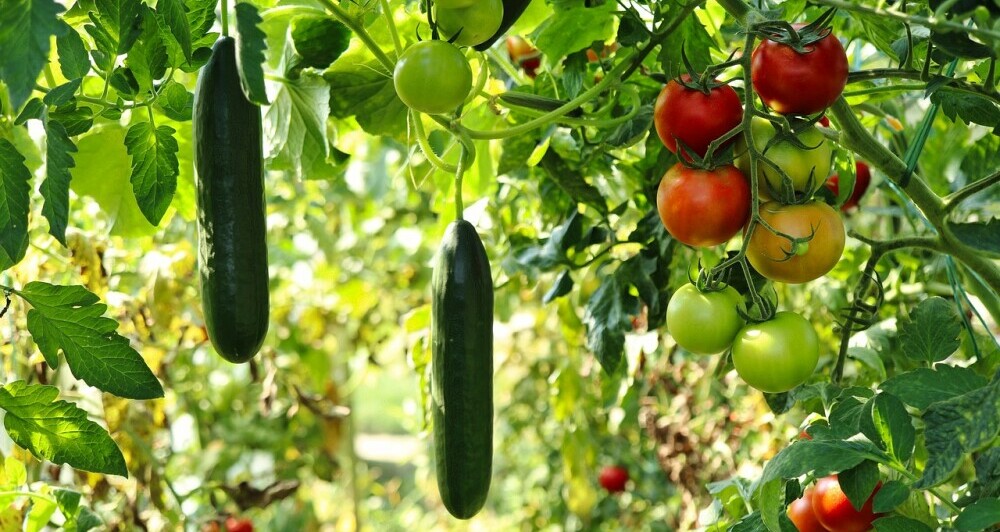 I understand the allure of cultivating your own food. There’s something innately rewarding about harvesting vegetables you’ve grown with your own hands. But with living spaces shrinking and urban environments expanding, the dream of a personal garden seems out of reach for many. That’s where the brilliance of vertical vegetable gardening comes in. This innovative approach to agriculture isn’t just a solution—it’s a revolution for garden enthusiasts with spatial constraints.
I understand the allure of cultivating your own food. There’s something innately rewarding about harvesting vegetables you’ve grown with your own hands. But with living spaces shrinking and urban environments expanding, the dream of a personal garden seems out of reach for many. That’s where the brilliance of vertical vegetable gardening comes in. This innovative approach to agriculture isn’t just a solution—it’s a revolution for garden enthusiasts with spatial constraints.
Vertical gardening, as the name suggests, is all about growing plants upwards rather than outwards. This style of gardening is ideal for those living in apartments, condos, or homes with limited yard space. By taking advantage of vertical space on balconies, patios, and walls, it offers a way to grow a multitude of vegetables without requiring extensive horizontal areas.
There’s more to this method than just saving space. Vertical gardening can contribute significantly to ecological sustainability. It reduces the carbon footprint by localizing food production and decreasing the need for transportation. Furthermore, it can act as a natural air filter, improving air quality in densely populated areas. As for wellness, tending to a vertical garden can be a soothing, meditative activity that reduces stress and encourages a connection with nature.
Before digging into the specifics of building your own vertical vegetable garden planter, remember that planning is as crucial as execution. The next section will guide you through designing your vertical space, selecting the right vegetables, and putting together the materials you’ll need to start this rewarding project.
Designing Your Vertical Vegetable Garden Planter
 When you decide to harness the vertical spaces for your vegetable garden, careful planning is vital. It starts with picking a spot that gets enough sunlight. Whether it’s a balcony, patio, or small backyard, ensure at least six hours of sun daily. Remember, even shadow-loving vegetables need some sunlight to thrive.
When you decide to harness the vertical spaces for your vegetable garden, careful planning is vital. It starts with picking a spot that gets enough sunlight. Whether it’s a balcony, patio, or small backyard, ensure at least six hours of sun daily. Remember, even shadow-loving vegetables need some sunlight to thrive.
Not every vegetable is suitable for vertical gardening. You have options like climbing peas, beans, and vining tomatoes. Lettuce, herbs, and strawberries also adapt well to vertical constraints. Your goal should be to select vegetables that grow upward naturally or can be easily trained to do so.
You don’t need an elaborate array of tools to start. Basic items include a saw, drill, screws, and durable, non-toxic material like cedar or vinyl for creating planters. Remember, the safety of your food starts with the safety of your materials.
Here’s a quick guide to assembling your vertical planter: Secure a trellis or a sturdy frame as the backbone of your structure. Create or buy containers and mount them in a cascading design to maximize space. Each container should have ample depth for roots to expand and drainage to prevent waterlogging.
Watering vertical gardens can be challenging, but a simple drip irrigation system can save time and water. It delivers moisture straight to the roots and can be automated for consistency. By planning a vertical garden with both convenience and plant health in mind, you’re setting the stage for a robust, fruitful yield.
Best Practices for Vertical Garden Maintenance
 Take care of your vertical garden with routine checks and adjustments. Regular monitoring helps you spot potential issues early.
Take care of your vertical garden with routine checks and adjustments. Regular monitoring helps you spot potential issues early.
Use organic pest control methods. Natural alternatives to chemicals keep your vegetables safe to eat and protect the environment.
Harvest your vegetables when they’re ripe. Timely picking encourages new growth and can improve yield.
Adapt to the changing climate. Employ protective measures such as shade cloths during intense heat or covers for frost.
Share your experiences with others interested in vertical gardening. Trading tips and surplus produce can build community.
